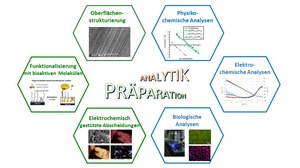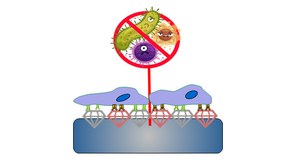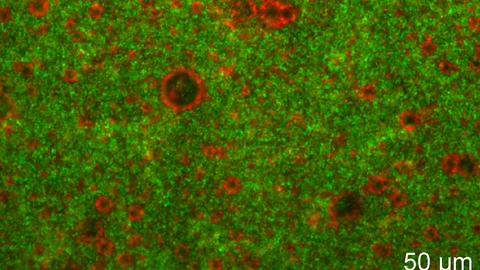Biofunctionalized surfaces
The Biofunctionalized Surfaces Group at the Max Bergmann Center for Biomaterials is working on i) the functionalization of biomaterials with a focus on the development of novel, innovative processes for the immobilization of biologically active molecules on biomaterial surfaces, ii) the antimicrobial and anti-adhesive treatment of biomaterial surfaces to reduce biofilm formation, particularly for dental applications, and iii) the characterization of materials and, in particular, their interaction with human cells (osteoblasts, osteoclasts, osteoclasts). surfaces to reduce biofilm formation, particularly for dental applications, and iii) characterization of materials and in particular their interaction with human cells (osteoblasts, osteoclasts, fibroblasts, endothelial cells) or bacteria.
 © CWB
© CWB
Research profile
- Functionalization of biomaterial materials with organic or inorganic components, in particular innovative processes for the immobilization of biologically active molecules on biomaterial surfaces using electrochemical-based processes
- antimicrobial or anti-adhesive surface equipment
- Characterization of materials using confocal laser scanning microscopy, fluorescence microscopy, atomic force and scanning electron microscopy as well as electrochemically based examination methods (potentiodynamic measurements, impedance spectroscopy)
- Evaluation of the interaction of materials with various human cell types (osteoblasts, ostclasts, fibroblasts, endothelial cells) in static and dynamic systems or with microorganisms (limited to L1 classification)
- Current projects




